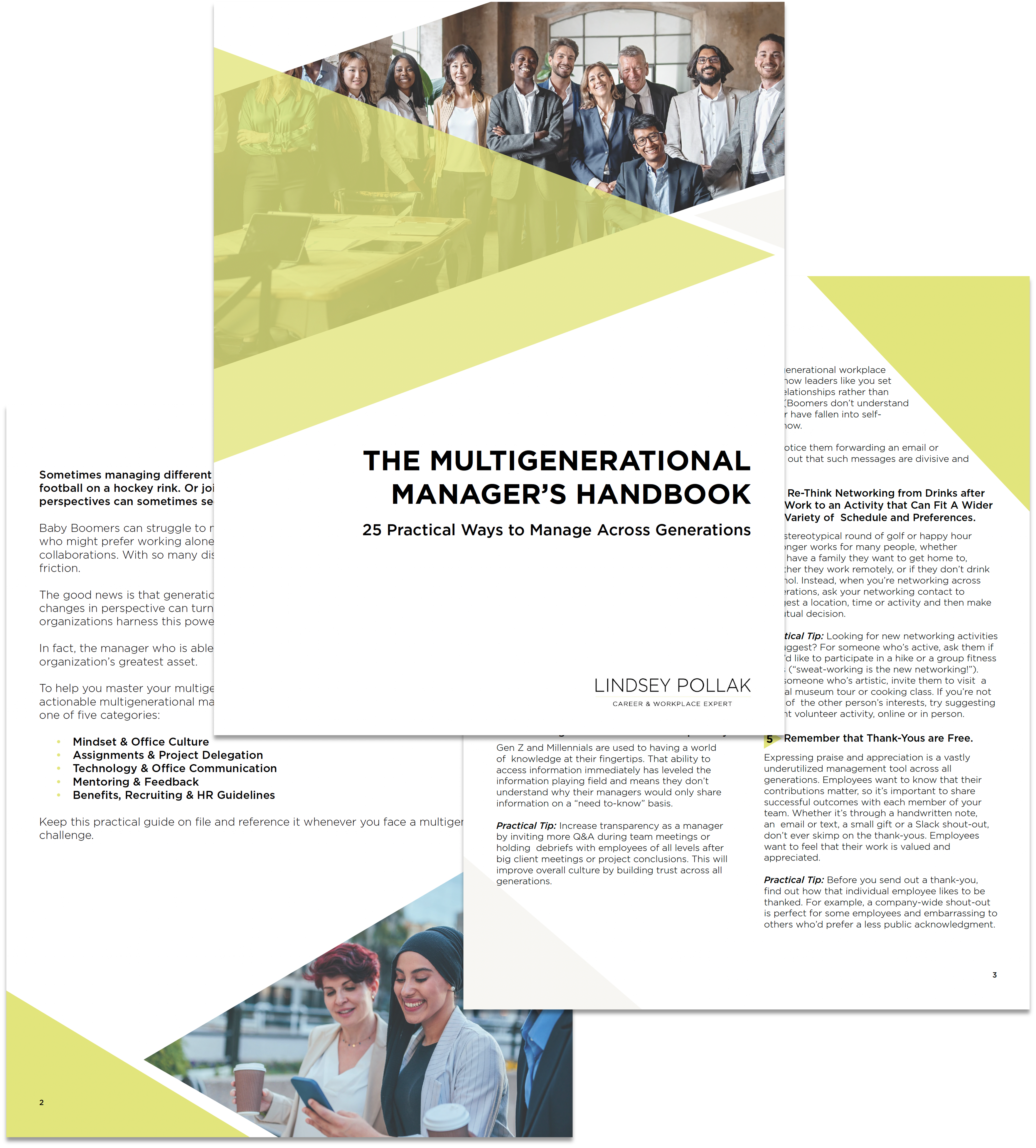Millennials are looking for flexibility in the workplace — they’re comfortable checking work email from home, but they also want to be able to check personal emails at work, for example.
This can be challenging for employers, especially large organizations in which different employees are looking for different things, such as job-sharing, working from home and various start and stop times.
This week, I’ve been reading about how organizations can build a flexible workforce and predictions about an increase in workplace flexibility this year.
- How to Create a Formalized Flexible Work Program for Your Company from Entrepreneur: “Determine which types of flexibility will be offered and to whom. Not all employees like to work from home, and others might not like flexible schedules, so it’s important to survey staff members. Understand what they would like in a flexible work program so you can create offerings that appeal to your workers and potential hires. Next, determine which types of flexibility are appropriate for which departments or job roles. For example, front-facing positions typically can’t work from home, but they might be able to adopt flexible or part-time hours.”
- Predictions for 2015: Flexible work arrangements top list from the Miami Herald: “While many companies are setting policies on flexible work arrangements, their workers are quietly working from outside the office whenever possible. Working where you want or when you want and is a perk employees will put a premium on in 2015. Those workers who can work from home on occasion tell me they plan to stay in their jobs as long as possible, because not having that flexibility would cost them in commute time, babysitter fees or missed parenting opportunities. Most workers say they are more productive on the days they work from home.”
- 2015 workplace predictions: Outdated best practices are out—flexibility and training are in from BLR: “In a study conducted earlier this year by Fierce, an astounding 70 percent of respondents cited work/life imbalance as a major cause of stress. This impact not only affects the quality of life of employees, but ultimately their value within the organization. The good news is that more and more leaders understand the connection between happy, rested employees and output. 2015 will be a progressive year in this regard, with more companies offering flex hours, telecommuting and unlimited—or increased—paid time off.”
- The autonomous office: how to empower your team from The Guardian: “If you trust your team members, more often than not they will step up and take responsibility. It then becomes less about the structures you have in place and more about the culture you wish to instil. If you can empower your team members to take ownership of their work and show them that as leaders we have full faith in their abilities, you are likely to be surprised by what they will achieve.”
- 10 good reasons why working remotely makes sense from Tech Republic: “The remote work revolution has been rumbling across industries for years now, and it isn’t over yet. Flexible working is a done deal, but remote working continues to spread. Andy Lake, editor of flexible work resource Flexibility, said Department for Business surveys showed that more than 90 percent of companies offered flexible working of some kind, but that this was mostly flexible hours and part-time working rather than telecommuting. Expect more staff to disappear from the old cube farm as more staff convince their bosses to let them work from home.”

